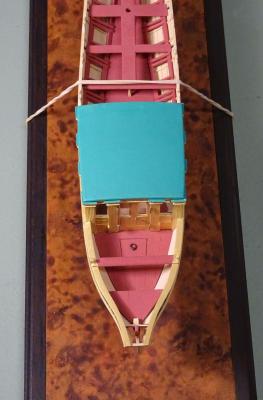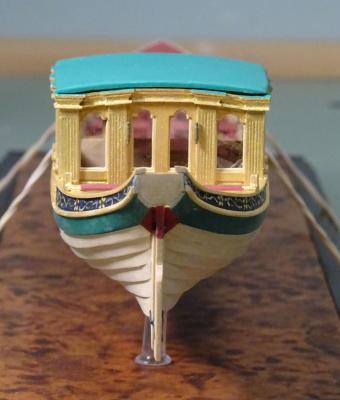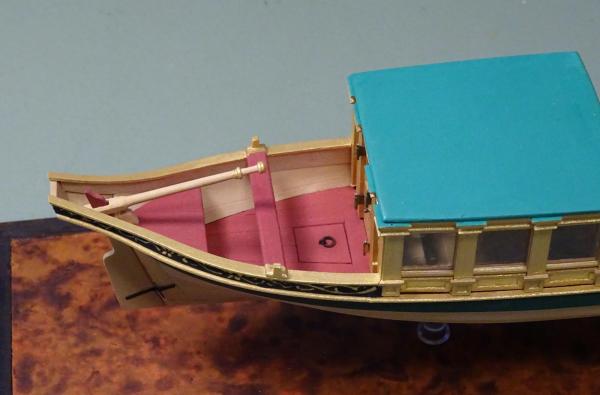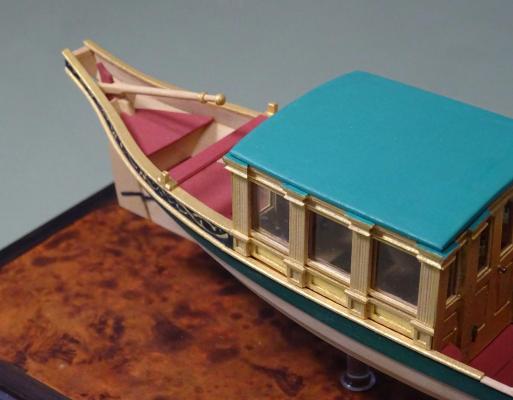-
Posts
13,133 -
Joined
-
Last visited
Content Type
Profiles
Forums
Gallery
Events
Everything posted by druxey
-
Those frames look terrific, Frank. As for keel flex, once the keelson is in and there are longitudinal such as deck clamps, the structure will be much more stable. As far as time goes to construct frames, your results are worth it.
- 649 replies
-
- dunbrody
- famine ship
-
(and 2 more)
Tagged with:
-
If you are a serious modeller - and it appears that you are - and can afford it, you should seriously consider a small circular saw.
-
If I may comment again, Maurys, those lodging knees look rather 'chunky'. Check out photos of contemporary models, and you'll see that the athwartship arms are narrower.
- 525 replies
-
- anchor hoy
- hoy
-
(and 1 more)
Tagged with:
-
Seems like a more workable solution, both from a stability and ease of construction perspective.
- 525 replies
-
- anchor hoy
- hoy
-
(and 1 more)
Tagged with:
-
Do you have a small saw like a Microlux, Proxxon or Byrnes? It makes cutting dimensioned material very consistent, without the wastage that will occur with the knife-and-ruler method. It's also much quicker! For small section, you should have or make a zero-clearance insert.
-
It probably wouldn't lay very flat with all that gunk on it! If you have The Fully Framed Model, Volume II, there is a plan of a rudder coat (British, but the French couldn't have been that different) on page 289 with description of how it was put together and installed.
-
Thanks again, everyone. I was away this weekend, so no progress. Back agin soon, though! BTW, I did paint the tiller handhold, and like the result.
- 641 replies
-
- greenwich hospital
- barge
-
(and 1 more)
Tagged with:
-
I wonder if the tank was that wide. If it was not completely filled, water sloshing across from side to side would make the hoy unstable. As for lining, perhaps it was sheet zinc at this time period?
- 525 replies
-
- anchor hoy
- hoy
-
(and 1 more)
Tagged with:
-
Interesting back-story, Glenn. 'Handyman' is grossly under-selling yourself, though! Thanks for sharing your journey. And yes, kids just love the gross stuff, don't they?
-
Correct on your assumption, Ed. I've a number of sizes made for different diameters. To prevent damage to the holder, a small hole is bored all the way through first. This allows a wire to be poked through, should the deadeye be unwilling to drop out after processing. Next the bore is drilled slightly smaller than the deadeye for about twice its thickness, then the hole opened out to the diameter of the deadeye for its depth. The deadeye then sits on a slight step and the drill bit doesn't chew up the holder.
- 3,618 replies
-
- young america
- clipper
-
(and 1 more)
Tagged with:
-
To save bad language and lost deadeye blanks down the chuck, I turn the end of a piece of brass rod with a shallow cup the diameter and depth of the deadeye. I tap and drill into one side with a tiny thread (00-90) and use a screw to secure the blank from moving around while drilling the three holes. Try that, Ed.
- 3,618 replies
-
- young america
- clipper
-
(and 1 more)
Tagged with:
-
Dear Glenn, I wish you could see my smile as I studied your latest photographs. Standing ovation!
-
Nice re-do, Frank. Those mini-cam clamps are a useful aid. Must make a few myself....
- 649 replies
-
- dunbrody
- famine ship
-
(and 2 more)
Tagged with:
-
Thanks, gentlemen all. One of the 'dignitaries' who would have sat in the coach was Sir Thomas Hardy. He was Governor of Greenwich Hospital from 1834 to 1839. I forgot to mention one other item on the 'to do' list: the stern badge.
- 641 replies
-
- greenwich hospital
- barge
-
(and 1 more)
Tagged with:
-

A Lorch Micro-Mill that never was ...
druxey replied to wefalck's topic in Modeling tools and Workshop Equipment
Lorch lurches! The monster lives!! I look forward to you progress with this re-build. -
Thanks for the explanation, Gaetan. Bien entendu!
- 728 replies
-
- le fleuron
- 64 gun
-
(and 1 more)
Tagged with:
-
Ed: no special paper was used, just regular bond. As it's sealed on both sides, (paint on one, white glue on the other) deterioration is unlikely. Thanks to everyone for looking in and for all the 'likes'. It's very encouraging! Today I installed the aft thwart and mooring timber heads, as well as the tiller. There was no indication of a tiller on the draught, so this is my own invention. I may paint the hand-hold in crimson. The tiller was carved and sanded to shape by hand, not turned. At this point in the build, it is time to make a list of what remains to be done. There are ornamental carved brackets at each corner of the coach, two ensign staffs and their flags. Also, there are twelve oars to make. Stay tuned!
- 641 replies
-
- greenwich hospital
- barge
-
(and 1 more)
Tagged with:
-
Hmmm. Now, focus, Mike, focus! Good to see you back in action on Aggie.
- 150 replies
-
- agamemnon
- caldercraft
-
(and 1 more)
Tagged with:
-
I guess that you - and we - are pumped! They look great, Chuck.
- 1,051 replies
-
- cheerful
- Syren Ship Model Company
-
(and 1 more)
Tagged with:
About us
Modelshipworld - Advancing Ship Modeling through Research
SSL Secured
Your security is important for us so this Website is SSL-Secured
NRG Mailing Address
Nautical Research Guild
237 South Lincoln Street
Westmont IL, 60559-1917
Model Ship World ® and the MSW logo are Registered Trademarks, and belong to the Nautical Research Guild (United States Patent and Trademark Office: No. 6,929,264 & No. 6,929,274, registered Dec. 20, 2022)
Helpful Links
About the NRG
If you enjoy building ship models that are historically accurate as well as beautiful, then The Nautical Research Guild (NRG) is just right for you.
The Guild is a non-profit educational organization whose mission is to “Advance Ship Modeling Through Research”. We provide support to our members in their efforts to raise the quality of their model ships.
The Nautical Research Guild has published our world-renowned quarterly magazine, The Nautical Research Journal, since 1955. The pages of the Journal are full of articles by accomplished ship modelers who show you how they create those exquisite details on their models, and by maritime historians who show you the correct details to build. The Journal is available in both print and digital editions. Go to the NRG web site (www.thenrg.org) to download a complimentary digital copy of the Journal. The NRG also publishes plan sets, books and compilations of back issues of the Journal and the former Ships in Scale and Model Ship Builder magazines.






